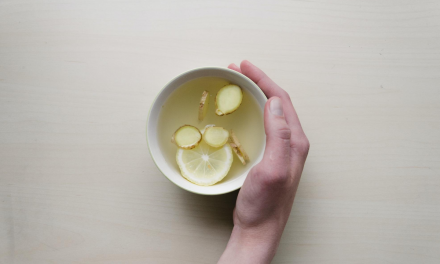Reprint from Western Pa Health and Fitness Magazine of article written by Deborah Barr
The tiny bottles in your kitchen spice rack contain a powerhouse of possibilities. Herbs, enjoying resurgence in popularity, have a rich history as a staple of daily life. What master herbalist Susan Weed calls our “green allies” can add zest to a meal, freshen the air or sooth a sore throat.
The use of herbs in cooking goes as far back as the first-century cookbook, written by the Roman epicure, Apicius. Many herbal combinations are reflected in modern recipes for soups, salads, fish, desserts and beverages.
Herbs offer us a rapport with nature. Babylonian clay tablets from 3000 B.C. show medical treatments. During the next 1000 years, cultures in China, Assyria, Egypt and India developed a written record of mainly medicinal herbs. Egyptian writings dating back from 1500 B.C. contains medical prescriptions and cosmetic and aromatic uses of herbs.
As gardening developed for pleasure, books included the aesthetic appeal of herbs as garden plants. The visual and scent appeal of an herb garden can give us much pleasure.
Health Benefits of Herbs
The country with the longest tradition of herbal medicine is China. The legendary Emperor Shen Nung, who died in 2698 B.C. wrote the Canon of Herbs. His text deals with 252 plants and how to administer them.
A hundred years later, the Yellow Emperor, Huang Ti, formalized herbal medical theory in the Nei Ching. In the seventh century, the government of the Tang dynasty printed and distributed A Revised Canon of Herbs throughout China. In 1578, Li Shizhen completed a world famous Compendium of Materia Medica, which listed 1800 healing substances and 11,000 recipes or compounds.
The Babylonians had an enormous pharmacopoeia with 1400 plants. At about the same time, Indian physicians were using hundreds of herbs in their treatments.
Hippocrates brought Western medicine into the scientific framework of diagnosis and treatment. He dismissed the idea of disease being punishment from the gods and considered food, occupation and climate as important factors in disease. He believed it was the individual’s responsibility to aid in self-healing through diet and plant medicines.
With the ascendancy of science in the 19th century came the ability to synthesize plant parts and concentrate doses. Today, because of the great concern about the side effects of drugs, an understanding of ecology, and people’s desire to take greater responsibility for their health, herbal medicine is experiencing a remarkable revival.
It is ironic that herbology is considered an “alternative,” since for thousands of years people have turned to plants for healing, and the relatively new science of synthetic drugs is viewed as “orthodox.”
Dr. Wayne R. Fiscus, a chiropractor and wholistic health practitioner, advised that using herbs that grow in the part of the country where you live is best. Herbs and preparations from the other side of the globe may not have the desired effect.
Even when choosing herbal teas, use caution. Use single herb teas rather than those with combinations of herbs. Herbs can be powerful and potent medicines. It is best to consult a qualified herbalist or health practitioner who has training in and understanding of the use of herbs.
What and When to Tap the Little Herb Power into your Cooking
Dill
Ancient Egyptians and Greeks recorded dill as a soothing medicine. Early settlers took dill to North America, where it became known as “meetin’ seed,” because children were given dill to chew on during long sermons. Uses: The seed can be added whole or ground to soups, fish dishes, pickles, cabbage, breads. Finely chop the leaf and add to soup, potato salads, salmon and grilled fish or boil with new potatoes. Crush the seed and infuse as a strengthening bath for nails. Dried dill leaves retain only a little flavor. So use generously when cooking and add at the last minute.
Tarragon
It drives from the French estragon and the Latin dracunculus, a “little dragon.” The dragon connection may come from tarragon’s fiery tang and it’s serpent-like roots. It can sweeten the breath, act as a soporific, and, if chewed before taking medicine, dull the taste.
Use leaf sparingly for a warm subtle flavor, which diffuses quickly through other ingredients. Use for béarnaise, tartar and hollandaise sauces. Add shredded leaf to avocado fillings, mayonnaise for fish dishes, salad dressings, light soups, tomatoes. Good in stuffing. leaves are rich in iodine, mineral salts, Vitamins A and C.
Calendula/Marigold
A most versatile herb, popular as a garden flower for use in cosmetic and culinary, as a dye and for its healing properties. Ancient Egyptians valued it as a rejuvenating herb. Hindus used it to decorate temple altars. Persians and Greeks garnished and flavored food with its golden petals. It is a soothing antiseptic and an excellent skin healer. Use Marigold metals lavishly to give a saffron color and add light tang flavor to rice, fish, soups, soft cheese, cakes and sweet breads. Sprinkle the leaf in salads and stews. Dry the flower and use the petals to add color to potpourri. Infuse the flower and use it as a healing mouthwash for gums.
Sunflower
This remarkable flower, cultivated by American Indians, derives its name from helios, the Greek work for the sun. In the 15th century Aztec sun priestesses were crowed with sunflowers. All parts of the sunflower are usable. Shell and eat the seeds raw or roast on cookie sheets in over 10 to 15 minutes at 300 degrees. Add sprouted seeds to salads and sandwiches. Eat the raw flower buds in salads, or steam and serve like artichokes. Seeds are rich in vitamins B1, B2, niacin, iron, phosphorus, potassium, sulphur, vegetable fats and proteins.
Bay/Laurel
The bay tree was scared to Apollo, Green god prophecy, poetry and healing, Apollo’s temple at Delphi had a roof made entirely of bay leaves for protection against disease, witchcraft and lightning. Use the leaves in stews, soups and sauces. Add to marinates, stock, stuffing, pate, curry, game and poached fish broth. Add to dried beans when cooking to make the beans easier to digest and eliminate gas. Remove leaf before serving. Hang the branches to freshman and perfume the air.
Basil
An important culinary herb with a warm spicy flavor, it is a favorite of many cooks. A native to Indian, basil is held in reverence there as a plant of divine essence. The Indians chose this herb upon which to swear their oaths in court. Pound basil leaf with oil or tear with fingers. Do not chop. Add last minute to cooked dishes. Sprinkle over salads and sliced tomatoes. Basil’s rich, pungent flavor complements garlic. Place pots of basil on windowsills to deter flies.
Savory
One of the oldest flavoring herbs, it is considered an antiseptic beneficial to the digestive tract. The Romans added savory to sauces and vinegars and introduced it to Northern Europe. Cook Summer Savory with beans, fresh or dried, or in white sauces. Mix with parsley and chives for roasting poultry. Sprinkle finely chopped leaves on soups and sauces. The flowers can be infused as a tea to stimulate appetite, ease digestion. Can also serve as antiseptic gargle.
Sorrel
On a hot, summer day, haymakers would eat the succulent leaves to quench their thirst. Most sorrel has a sharp acidic flavor. Buckler leaf sorrel boasts a milder lemony zest. It is preferred by the French for sorrel soup. Eat raw young sorrel leaves in salads or sorrel soup. Cook like spinach. Use to season vegetable soups, in sauces, and to season omelets. Use the juice of sorrel leaf to bleach rust, mold and ink stains from linen, wicker and silver.
All articles and information on this website are protected under copyright laws and are owned by Deborah Barr, Whole Health Resources. You may use this article in your print or electronic publication at no charge. I ask that you contact me letting me know in what publication you will use my article and when it will be published. You are required to use bio and copyright information at end of each article and mail a copy of the publication or link to online publication to me once published.
If you are in need of additional articles or fresh article ideas, contact me. I will be happy to discuss some relevant article topics.





